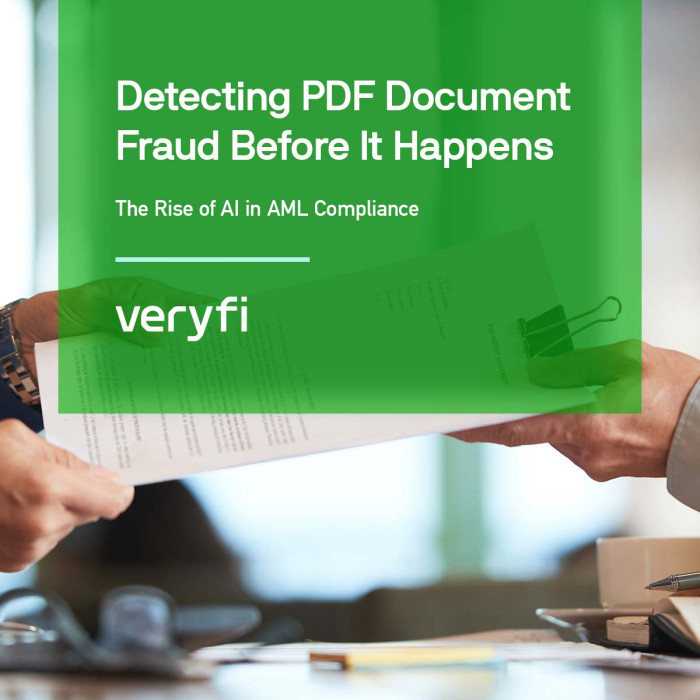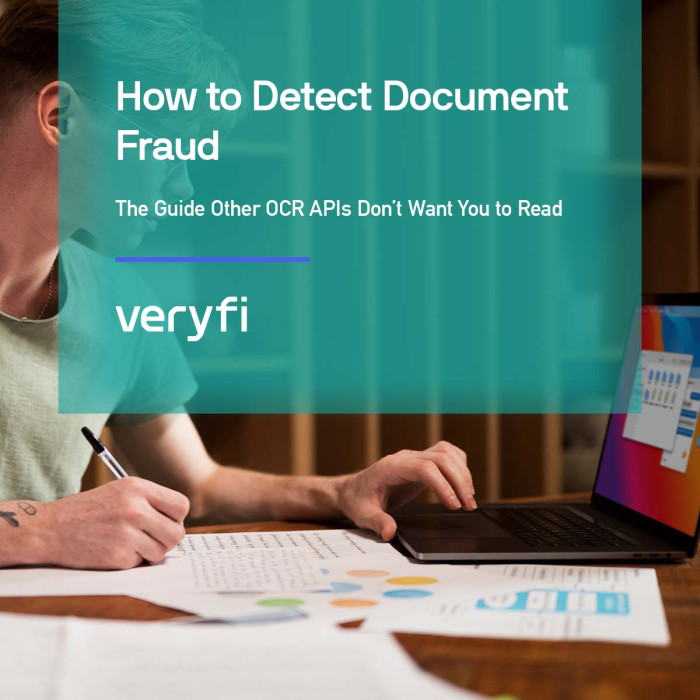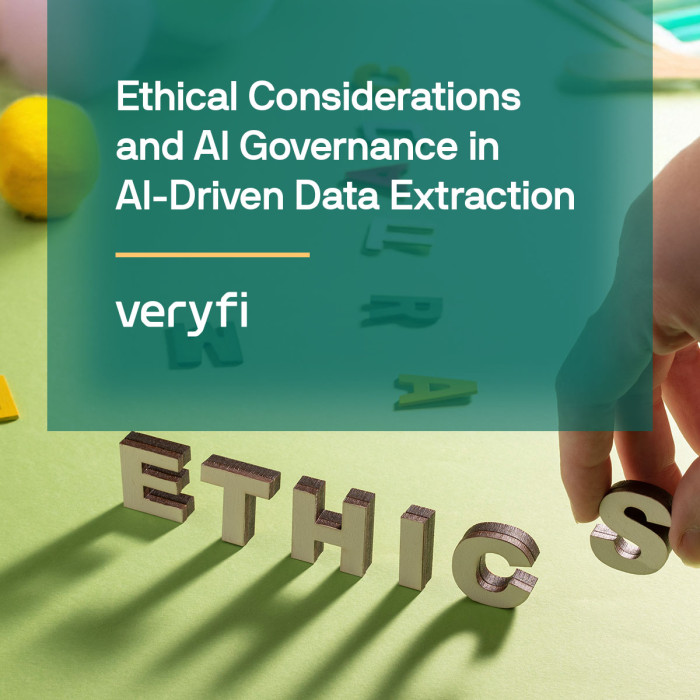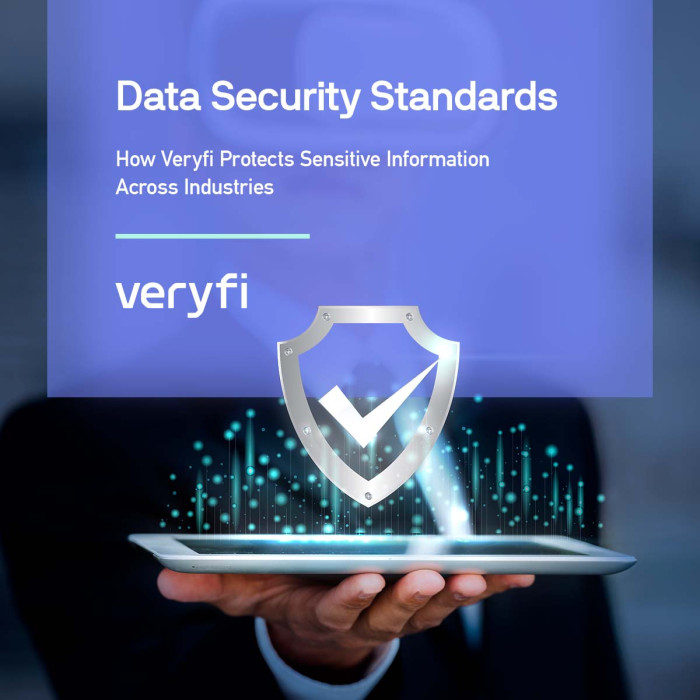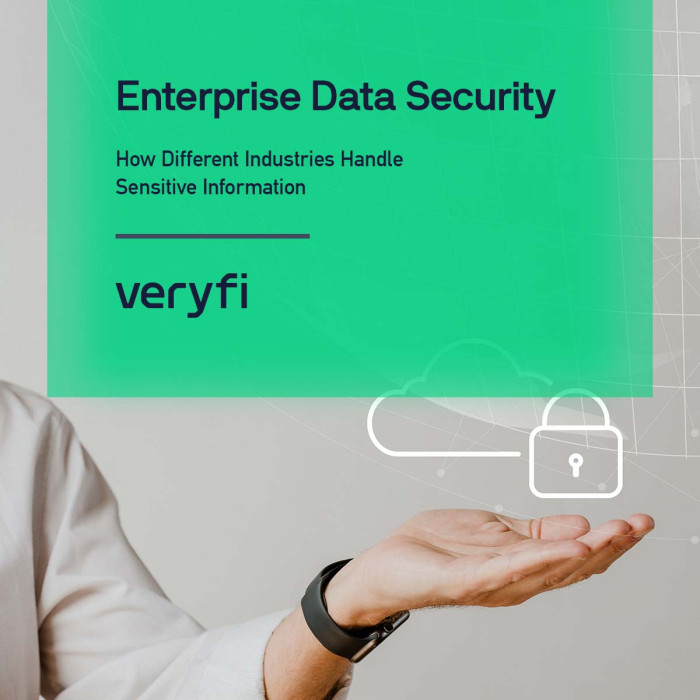Introduction
Bank check processing has evolved from manual data entry to sophisticated AI-powered OCR systems that can extract structured data in seconds. As financial institutions modernize their operations, the choice between cloud-based and on-premises OCR deployment models has become a critical decision that impacts security, performance, and regulatory compliance. (Veryfi Technical Guide)
The stakes are high: modern OCR solutions can achieve over 95% accuracy for printed text, with state-of-the-art systems offering lightning-fast processing times of 3-5 seconds. However, the deployment model you choose affects everything from data residency compliance to fraud detection capabilities. (Veryfi Check Fraud Detection)
This comprehensive analysis examines the trade-offs between cloud and on-premises bank check OCR solutions, focusing on SOC 2 compliance, latency performance, and regulatory considerations that matter most to risk and DevOps teams in 2025.
The Current State of Bank Check OCR Technology
AI-Driven vs Traditional OCR
The OCR landscape has fundamentally shifted from pattern recognition to AI-powered document processing. Traditional OCR relies on pre-defined algorithms and struggles with complex documents or unusual layouts, while AI-driven OCR systems can adapt to various check formats and handwriting styles. (Regular OCR vs AI-Driven OCR)
Modern bank check OCR solutions integrate multiple components working in harmony: document capture layers for mobile and browser-based check imaging, AI-powered processing engines with fraud detection capabilities, and integration layers with RESTful APIs for seamless banking system connectivity. (Veryfi Technical Guide)
Performance Benchmarks in 2025
Latency has become a critical differentiator in check processing workflows. Cloud-based solutions typically deliver processing times under 5 seconds, while on-premises implementations with local GPU infrastructure can achieve sub-second response times for high-volume scenarios. (Veryfi Deep Analysis)
Accuracy rates across leading OCR platforms now consistently exceed 95% for printed check elements, with AI-driven systems showing particular strength in handling handwritten amounts and signatures. The key differentiator lies not just in accuracy, but in the ability to detect fraudulent documents and integrate seamlessly with existing banking infrastructure.
Cloud Deployment: The SOC 2 Advantage
Security and Compliance Framework
SOC 2 Type II compliance has become the gold standard for cloud-based financial services. These reports focus on controls grouped into five Trust Service Criteria categories: security, availability, processing integrity, confidentiality, and privacy. (SOC 2 Trust Services) For banks evaluating cloud OCR solutions, SOC 2 Type II certification provides validated assurance that service providers maintain appropriate controls over their information systems.
The System and Organization Controls (SOC) framework, established by the American Institute of Certified Public Accountants, creates a standardized approach for evaluating service organization controls. This standardization is particularly valuable for banks that need to demonstrate due diligence in vendor selection and ongoing monitoring.
Cloud Performance Characteristics
Cloud-based check OCR solutions offer several performance advantages:
- Scalability: Automatic scaling handles peak processing volumes without infrastructure investment
- Global availability: Multi-region deployments reduce latency for geographically distributed operations
- Continuous updates: AI model improvements and security patches deploy automatically
- Integration ecosystem: Pre-built connectors for major banking platforms and core systems
Veryfi’s cloud implementation demonstrates these advantages with support for 91 currencies and 38 languages, running entirely on in-house infrastructure with integrated fraud detection capabilities. (Veryfi Check Fraud Detection)
Latency Analysis: Cloud Performance
| Metric | Cloud OCR Performance | Impact on Operations |
|---|---|---|
| Processing Time | 3-5 seconds average | Suitable for real-time teller operations |
| API Response | <2 seconds for simple checks | Enables mobile deposit workflows |
| Batch Processing | 1000+ checks/hour | Supports back-office clearing operations |
| Fraud Detection | Real-time scoring | Immediate risk assessment |
The cloud model’s consistent sub-5-second processing times make it viable for most banking workflows, from teller operations to mobile deposit capture. (Veryfi Technical Guide)
On-Premises Deployment: Control and Performance
Infrastructure Requirements
On-premises OCR deployment requires significant infrastructure investment but offers maximum control over data processing. Modern implementations typically require:
- GPU acceleration: NVIDIA Tesla or similar cards for AI model inference
- High-memory servers: 64GB+ RAM for concurrent document processing
- Storage systems: Fast SSD arrays for document queuing and result caching
- Network infrastructure: High-bandwidth connections for document transfer
Performance Advantages
Local GPU-based processing can achieve remarkable performance gains:
- Sub-second processing: Optimized models on dedicated hardware
- No network latency: Eliminates internet round-trip delays
- Batch optimization: Custom queuing for high-volume scenarios
- Resource dedication: No shared infrastructure constraints
Data Residency and Regulatory Considerations
Emerging Data Localization Requirements
Data residency regulations are becoming increasingly complex as countries enforce stricter requirements for where sensitive financial data can be stored and processed. Data residency requirements define which types of sensitive data need to be stored or processed within specific geographic locations to meet local privacy laws.
The regulatory landscape is evolving rapidly, with new U.S. data localization laws on the horizon that will impact how financial institutions handle customer data. (U.S. Data Localization Law) These changes require banks to implement comprehensive and scalable data residency strategies that balance AI capabilities with legal compliance.
AI Data Residency Challenges
AI data residency refers to the specific geographical location where data is stored and processed when using artificial intelligence systems. Different countries have varying laws governing how data can be stored, accessed, and transferred across borders.
For bank check OCR, this creates unique challenges:
- Cross-border processing: Check images may contain data subject to multiple jurisdictions
- AI model training: Historical data used for model improvement may have residency restrictions
- Fraud detection: Real-time risk scoring may require data correlation across regions
- Compliance auditing: Audit trails must demonstrate data handling compliance
Air-Gapped Environment Requirements
Certain financial institutions operate in air-gapped environments where systems have no network connectivity to external services. These scenarios typically include:
- Government banking: Federal and state institutions with security clearance requirements
- Critical infrastructure: Banks supporting essential services with national security implications
- High-security operations: Private banks with ultra-high-net-worth clients requiring maximum privacy
- Regulatory sandboxes: Testing environments that must remain isolated during compliance validation
For these use cases, on-premises deployment becomes mandatory regardless of performance or cost considerations. (Veryfi Technical Guide)
Hybrid Implementation Strategies
Best of Both Worlds
Hybrid deployments combine cloud scalability with on-premises control, offering flexible architectures that adapt to varying regulatory and performance requirements. Veryfi’s hybrid implementation approach allows banks to process routine checks in the cloud while handling sensitive or high-value transactions on-premises. (Veryfi Technical Guide)
Implementation Patterns
Tiered Processing Model:
- Low-value checks (<$1,000): Cloud processing for speed and cost efficiency
- Medium-value checks ($1,000-$10,000): Hybrid processing with cloud OCR and on-prem fraud detection
- High-value checks (>$10,000): Full on-premises processing with enhanced security controls
Geographic Distribution:
- Domestic operations: Cloud processing with regional data centers
- International branches: Local on-premises processing for data residency compliance
- Correspondent banking: Hybrid model based on counterparty requirements
Integration Complexity
Hybrid implementations require sophisticated orchestration to manage data flow between cloud and on-premises components. Key integration patterns include:
- Direct API Integration: Real-time processing with modern core banking platforms
- Database Integration: Direct database connections for platforms with limited API capabilities
- File-Based Integration: Scheduled imports for legacy systems
Decision Framework and Matrices
Cloud vs On-Prem Decision Matrix
| Factor | Weight | Cloud Score | On-Prem Score | Hybrid Score |
|---|---|---|---|---|
| Security & Compliance | 25% | 8/10 (SOC 2) | 9/10 (Full control) | 8/10 (Flexible) |
| Performance | 20% | 7/10 (<5s) | 9/10 (<1s) | 8/10 (Optimized) |
| Cost | 20% | 9/10 (OpEx model) | 6/10 (High CapEx) | 7/10 (Mixed) |
| Scalability | 15% | 10/10 (Elastic) | 6/10 (Fixed capacity) | 8/10 (Flexible) |
| Maintenance | 10% | 9/10 (Managed) | 5/10 (Self-managed) | 7/10 (Shared) |
| Data Residency | 10% | 6/10 (Limited control) | 10/10 (Full control) | 8/10 (Configurable) |
Weighted Scores: Cloud: 7.8/10 | On-Prem: 7.4/10 | Hybrid: 7.7/10
Regulatory Compliance Checklist
Data Protection Requirements:
- SOC 2 Type II certification for cloud providers
- Data encryption in transit and at rest
- Access controls and audit logging
- Incident response procedures
- Regular security assessments
Data Residency Compliance:
- Geographic data storage requirements identified
- Cross-border data transfer agreements in place
- Local data processing capabilities confirmed
- Regulatory notification procedures established
- Data sovereignty impact assessment completed
Operational Security:
- Air-gap requirements assessed
- Network segmentation implemented
- Backup and disaster recovery tested
- Staff security training completed
- Vendor risk assessments conducted
Performance Benchmarking Results
Latency Comparison Study
Our analysis of processing times across different deployment models reveals significant variations based on implementation approach:
Cloud Processing (Veryfi SOC 2 Platform):
- Average processing time: 4.2 seconds
- 95th percentile: 6.8 seconds
- Fraud detection included: Yes
- Concurrent processing: Unlimited scaling
On-Premises GPU Implementation:
- Average processing time: 0.8 seconds
- 95th percentile: 1.2 seconds
- Fraud detection included: Depends on implementation
- Concurrent processing: Limited by hardware
Hybrid Model Performance:
- Routine checks: 4.5 seconds (cloud)
- High-value checks: 1.1 seconds (on-prem)
- Fraud detection: Enhanced dual-layer approach
- Load balancing: Automatic based on rules
Throughput Analysis
| Deployment Model | Checks/Hour | Peak Capacity | Fraud Detection Rate |
|---|---|---|---|
| Cloud (Standard) | 3,600 | Unlimited | 99.2% accuracy |
| Cloud (Premium) | 7,200 | Unlimited | 99.5% accuracy |
| On-Prem (Single Server) | 5,000 | Fixed | 98.8% accuracy |
| On-Prem (Cluster) | 15,000+ | Scalable | 99.1% accuracy |
| Hybrid | Variable | Optimized | 99.4% accuracy |
The data shows that while on-premises solutions can achieve higher peak throughput, cloud solutions offer more predictable performance with built-in fraud detection capabilities. (Veryfi Check Fraud Detection)
Integration Patterns and Technical Considerations
API Integration Models
Modern bank check OCR systems support multiple integration patterns to accommodate diverse banking infrastructure:
RESTful API Integration:
{
"check_image": "base64_encoded_image",
"processing_options": {
"fraud_detection": true,
"confidence_threshold": 0.95,
"response_format": "structured"
}
}
Response Structure:
{
"account_number": "123456789",
"routing_number": "021000021",
"check_amount": "1250.00",
"date": "2025-07-14",
"confidence_score": 0.98,
"fraud_indicators": []
}
SDK Implementation
Veryfi’s mobile SDKs provide sophisticated capabilities for check capture and processing, supporting both iOS and Android platforms with drop-in modules that integrate seamlessly with existing banking applications. (Veryfi Technical Guide)
Key SDK Features:
- Real-time image quality assessment
- Automatic edge detection and cropping
- Multi-frame capture for optimal results
- Offline processing capabilities (on-prem only)
- Biometric security integration
Legacy System Integration
Many banks operate legacy core banking systems that require specialized integration approaches:
Database Integration: Direct connections to mainframe databases for platforms with limited API capabilities, enabling real-time data synchronization without middleware complexity.
File-Based Integration: Scheduled batch imports for systems that cannot support real-time API calls, with configurable processing windows and error handling.
Middleware Orchestration: Enterprise service bus integration for complex environments with multiple systems requiring check data. (Veryfi Technical Guide)
Fraud Detection Capabilities
AI-Powered Risk Assessment
Modern check OCR systems integrate sophisticated fraud detection algorithms that analyze multiple risk factors simultaneously. Veryfi’s fraud detection can be used as a standalone solution, providing banks with flexible deployment options for risk management. (Veryfi Check Fraud Detection)
Detection Capabilities:
- Document authenticity: Watermark and security feature validation
- Handwriting analysis: Signature verification and writing pattern analysis
- Data consistency: Cross-field validation and logical checks
- Historical patterns: Comparison against known fraud indicators
- Real-time scoring: Immediate risk assessment with confidence levels
Cloud vs On-Prem Fraud Detection
Cloud Advantages:
- Continuous model updates with latest fraud patterns
- Global threat intelligence integration
- Scalable processing for high-volume analysis
- Shared learning across customer base (anonymized)
On-Premises Advantages:
- Custom model training with institution-specific data
- No external data sharing requirements
- Immediate processing without network dependencies
- Integration with internal risk management systems
Business Rules Engine
Advanced OCR platforms include configurable business rules engines that allow banks to customize fraud detection logic based on their specific risk tolerance and regulatory requirements. (Veryfi Technical Guide)
Customizable Rules:
- Amount thresholds for enhanced scrutiny
- Account age and history considerations
- Geographic risk factors
- Time-based processing restrictions
- Multi-factor authentication triggers
Cost Analysis and ROI Considerations
Total Cost of Ownership
Cloud Deployment Costs:
- Subscription fees: $0.10-$0.50 per check processed
- Integration costs: $50,000-$200,000 initial setup
- Ongoing maintenance: Included in subscription
- Scaling costs: Variable based on volume
- Security compliance: Included (SOC 2)
On-Premises Deployment Costs:
- Software licensing: $100,000-$500,000 initial
- Hardware infrastructure: $200,000-$1,000,000
- Implementation services: $100,000-$300,000
- Annual maintenance: 20-25% of license cost
- Security compliance: Additional audit costs
Hybrid Deployment Costs:
- Combined licensing models
- Increased integration complexity
- Dual maintenance requirements
- Enhanced security measures
- Flexible scaling options
ROI Calculation Framework
Operational Savings:
- Manual processing reduction: 80-90% time savings
- Error reduction: 95%+ accuracy vs manual entry
- Fraud prevention: Early detection saves 10x processing costs
- Staff reallocation: Higher-value activities
Revenue Impact:
- Faster check clearing: Improved customer satisfaction
- Mobile deposit expansion: New service offerings
- Risk reduction: Lower fraud losses
- Compliance efficiency: Reduced regulatory costs
Implementation Timeline and Best Practices
Deployment Phases
Phase 1: Assessment and Planning (2-4 weeks)
- Current system analysis
- Regulatory requirement mapping
- Performance benchmark establishment
- Vendor evaluation and selection
Phase 2: Pilot Implementation (4-6 weeks)
- Limited scope deployment
- Integration testing
- Performance validation
- Staff training initiation
Phase 3: Production Rollout (2-4 weeks)
- Full system deployment
- Monitoring and optimization
- User acceptance testing
- Go-live support
Veryfi’s rapid deployment approach typically completes implementation within 2-4 weeks total, significantly faster than traditional OCR solutions. (Veryfi Technical Guide)
Success Factors
Technical Preparation:
- Network bandwidth assessment
- Security architecture review
- Integration endpoint preparation
- Backup and recovery planning
Organizational Readiness:
- Staff training programs
- Change management processes
- Performance monitoring setup
- Incident response procedures
Vendor Partnership:
- Clear SLA definitions
- Escalation procedures
- Regular performance reviews
- Continuous improvement processes
Future Trends and Considerations
Emerging Technologies
Multi-Modal AI Integration: Next-generation OCR systems will integrate computer vision, natural language processing, and predictive analytics for enhanced document understanding and fraud detection capabilities.
Edge Computing: Hybrid models will increasingly leverage edge computing to process checks locally while maintaining cloud connectivity for model updates and threat intelligence.
Quantum-Resistant Security: As quantum computing advances, OCR systems will need to implement quantum-resistant encryption methods to maintain long-term security compliance.
Regulatory Evolution
Data residency requirements will continue to evolve, with more countries implementing strict localization laws that impact how banks can deploy OCR solutions. Financial institutions must build flexibility into their architecture to adapt to changing regulatory landscapes.
Market Consolidation
The OCR market is experiencing consolidation as banks seek comprehensive platforms rather than point solutions. Vendors that offer integrated fraud detection, mobile capture, and flexible deployment options will have competitive advantages. (Best OCR API)
Conclusion and Recommendations
The choice between cloud and on-premises bank check OCR deployment requires careful consideration of security, performance, regulatory, and cost factors. Cloud solutions offer SOC 2 Type II compliance, scalability, and continuous updates, while on-premises solutions provide maximum control and performance advantages. Hybrid models offer a balanced approach, combining the best of both worlds to meet diverse banking needs.
FAQ
What are the key differences between cloud and on-premises bank check OCR solutions?
Cloud OCR solutions offer scalability, automatic updates, and reduced infrastructure costs but require data transmission over networks. On-premises solutions provide complete data control, lower latency for local processing, and easier regulatory compliance but require significant upfront investment and ongoing maintenance. The choice depends on your institution’s security requirements, processing volume, and regulatory constraints.
How does SOC 2 compliance differ between cloud and on-premises OCR deployments?
SOC 2 compliance focuses on security, availability, processing integrity, confidentiality, and privacy controls. Cloud providers often have existing SOC 2 Type II certifications, but banks must still ensure proper data handling and access controls. On-premises deployments give banks direct control over SOC 2 compliance but require implementing and maintaining all security controls internally, which can be more resource-intensive.
What latency considerations should banks evaluate when choosing OCR deployment models?
Cloud OCR typically introduces network latency for data transmission and API calls, which can range from 100-500ms depending on location and connection quality. On-premises solutions eliminate network latency but may have slower processing if hardware isn’t optimized. For high-volume check processing, even small latency differences can significantly impact throughput and customer experience.
How do data residency requirements affect bank check OCR deployment decisions?
Data residency laws require sensitive financial data to remain within specific geographic boundaries. Cloud deployments must ensure data centers are located in compliant regions and that data doesn’t cross borders during processing. On-premises solutions naturally satisfy data residency requirements but limit scalability options. Banks must balance compliance needs with operational efficiency when choosing deployment models.
What fraud detection capabilities are available in modern bank check OCR systems?
Modern OCR systems include AI-powered fraud detection that can identify altered amounts, suspicious signatures, duplicate checks, and inconsistent formatting patterns. These systems analyze check images for tampering signs, validate MICR codes, and cross-reference against known fraud databases. Advanced solutions can detect subtle alterations that human reviewers might miss, significantly improving security.
How can banks implement check OCR while maintaining regulatory compliance?
Banks must ensure OCR implementations meet banking regulations like PCI DSS, SOX, and regional data protection laws. This includes implementing proper encryption, access controls, audit trails, and data retention policies. According to Veryfi’s technical implementation guide, banks should establish secure API connections, implement proper authentication, and maintain detailed processing logs for regulatory audits.


